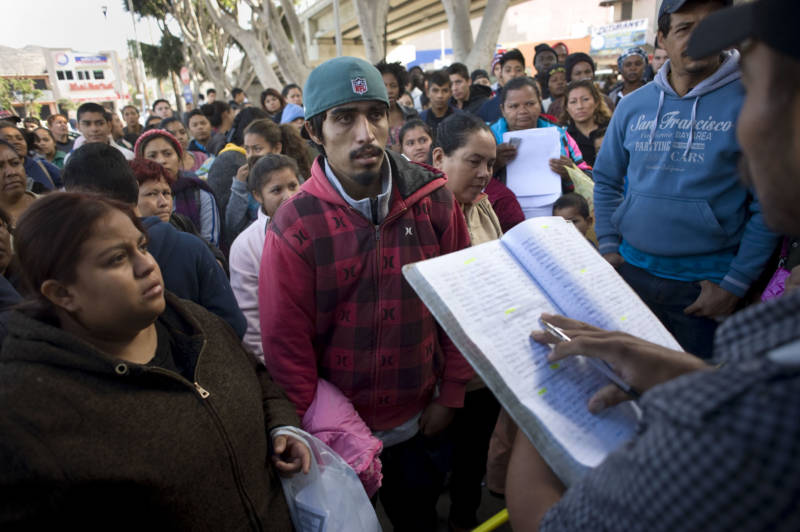Since late November, asylum-seeking migrants have been gathering regularly in the early hours near the El Chaparral Plaza at the San Ysidro Port of Entry in Tijuana, hoping to hear their names read from a very, very long list.
The list, which still has nearly 4,000 names on it and is maintained by the asylum-seekers themselves, determines who may line up to legally enter the United States on a given day to apply for asylum.
Recently, the number of migrants turning up when their names are called has been thinning.
Many of the migrants are from the so-called migrant caravan of Central Americans, which arrived at the U.S.-Mexico border at the end of November. Some have been waiting for weeks, even months, for their names to be called.
Volunteers working to help asylum-seekers — many of whom are fleeing gang and domestic violence in their home countries — cited shelter shutdowns and simply the challenging state the migrants were forced to wait in, as some of the reasons why migrants were not showing up in greater numbers.
Adelita Simone, who volunteers with the asylum-seekers, talked about the impact of shelter closures.
“They just shut down Benito Juarez, one of the shelters here close by, where people were staying,” she said. “They had to move people to different shelters. [Migrants] don’t know how to get here. They have to pay for transportation to get here.”

